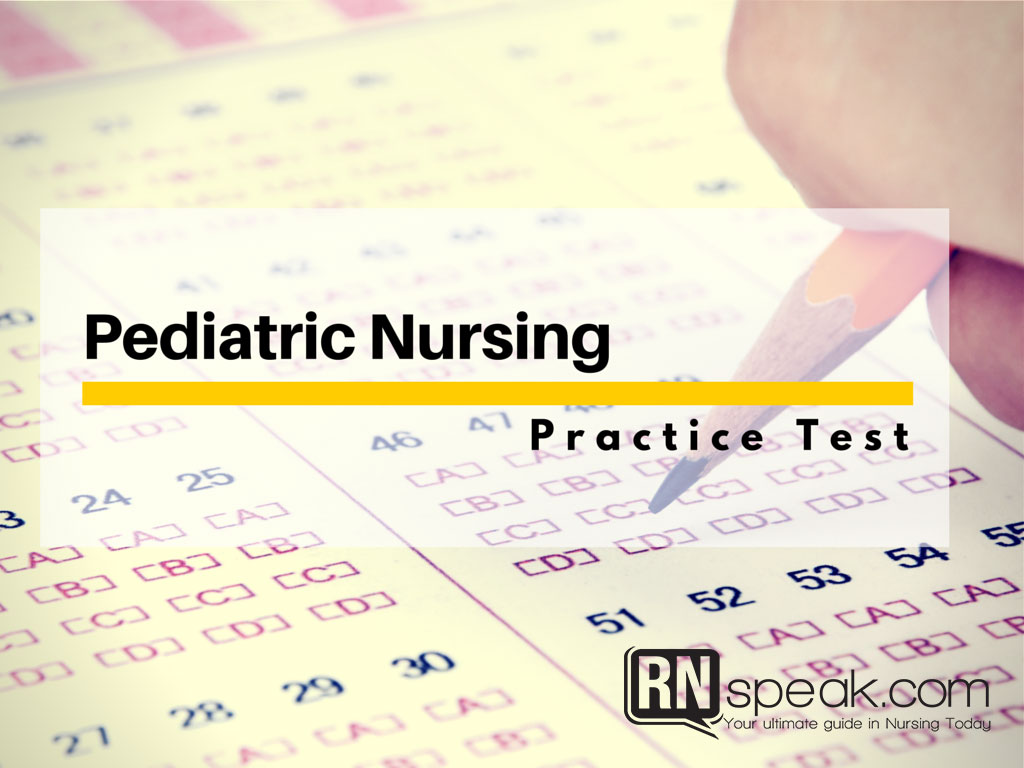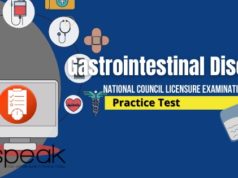This covers various topics in Pediatric Nursing from Erikson’s psychosocial theory, Nursing Prioritization, Management and Care of Cleft Lip, and Palate. This approach is a comprehensive type of exam since the Nursing Board Exam is also a comprehensive one.
This is a multiple-choice type of examination. Choose the BEST answer. Read the questions carefully before answering them.
1. In the pediatric surgical ward, you have been assigned to a one-month-old child with cleft lip and palate.
You have to teach the mother a proper way of providing nutrition to the child. The following are correct steps except:
A. Use rubber nipples with a small opening in order to prevent aspiration
B. Place the child in a semi-upright position when feeding
C. Feeding session should be done slowly
D. Teach the mother to stimulate the sucking reflex by rubbing the nipple against the lower lip of the baby
2. You were then asked by the mother when is the best time for surgical intervention for a cleft palate?
A. one to three months old
B. four to seven months old only
C. eight to eleven months old
D. six months to eighteen months old
3. A child has been recovering from an operation on the cleft lip. What is your priority nursing care?
A. Bleeding tendency
B. Wound care
C. Airway patency
D. Risk for Infection
4. Which of the following is the most common problem in infants when it comes to their gastrointestinal problem?
A. Achalasia
B. Gastric Ulcer
C. Intussusceptions
D. None of the above
5. Which of the following effective nursing intervention in order to prevent the occurrence of Gastroesophageal reflux?
A. Giving solid foods
B. Giving frequent small feedings
C. Giving semi-solid foods
D. Giving oshterized feeding
6. The following are signs and symptoms of asthma except:
A. Fatigue
B. Yellowish skin
C. Moist skin
D. Use of accessory muscles
7. A mother would like to know the reason why there is asthma in her child. How would you explain it?
A. An asthma attack is a response to the release of inflammatory mediators to epithelial cells. The autonomic neural control of the airway is affected.
B. An asthma attack can happen when the child is exposed to certain allergens that would trigger an allergic reaction to the bronchioles causing constriction of the bronchial tree. This is either acquired or being hereditary.
C. An asthma attack is an inborn problem of a child that involves abnormal growth of the bronchial tree causing restriction.
D. All of these
8. According to the National Asthma Education, mild intermittent asthma is occurring when the symptoms are:
A. Symptoms can happen twice a week
B. Symptoms can happen more than twice a week
C. There is no symptom only a sudden attack
D. Symptoms can happen continuously in a week
9. In the emergency room department, a child was rushed due to difficulty of breathing due to an asthma attack. What is the least nursing action?
A. Provide health teaching to the family
B. Check for airway patency
C. Request for Chest X-ray STAT
D. Give hydrocortisone STAT
10. These are common irritants that would start an asthma attack, except:
A. Psychological stress
B. Fast and binge eating
C. Environmental factors such as air pollution and smoke
D. Dust mites
11. In assessing a toddler, which of the following options is a sign of delay growth and development?
A. Growth rate is about 3 inches
B. Bowleggedness
C. Weight is 38 lbs
D. Protruding abdomen
12. A mother started to complain that her 2-year-old daughter starts to be picky in food choices. What is the appropriate health teaching?
A. Tell the mother that it will just go away when she is hungry.
B. Tell the mother that it is a normal development of toddlers, the best way to cope with this is not to force them but encourage them to eat nutritious snacks in between meals.
C. Tell the mother to resort to bottle-feeding
D. Tell the mother to give whatever the child wants in order to stop being picky.
13. A mother would like to ask when is the best time to teach the child to use utensils.
A. 12 months old
B. 2 years old and beyond
C. 6 years old
D. Both B and C
14. According to Erikson’s stage, what is the stage of a toddler going through?
A. Trust versus mistrust
B. Initiative versus Guilt
C. Autonomy versus Shame
D. Identity versus Role Confusion
15. As a nurse, what is the best way to prevent rheumatic fever in a child who has always tonsillitis?
A. Give anti-inflammatory medications
B. Give corticosteroids
C. Giving antibiotic prophylaxis
D. Giving Zalpen
16. What is the earliest time that a child can be diagnosed to have autism?
A. 2 years old
B.2 months old
C. 6 years old
D. 6 months old
17. A nurse can observe autism when a child exhibits:
A. Hyperactivity
B. Silent at all times
C. Being shy
D. Crying all the time
18. A mother would like to know what a good activity is for a child with autism, the best response would be:
A. Loud music
B. Various playmates
C. Self-stimulating activities
D. Small group activity
19. Since autism has no cure, how can you teach a parent to cope with autism?
A. Teach the parent the proper way for legal adoption
B. Teach the parent to join groups that would discuss autism
C. Teach the parent to allow the child to be educated using an alternative learning system appropriate to his degree of autism
D. Teach the parent to accept the fact since the child is after all helpless
20. These are the possible causes of autism except:
A. Maternal illness
B. Hereditary
C. Phenylketonuria
D. Traumatic brain injury
21. One night, a child was rushed to an emergency room with the following symptoms: fear of physical contact, apprehensive, bruises all over the body. These are possible signs of:
A. Physical abuse
B. Fall
C. Vehicular accident
D. Victim of Neglect
22. In caring for a child as a victim of physical abuse, what is the nursing priority?
A. Clean the wounds
B. Keep the child warm
C. Keep the child well hydrated
D. Preserve the bruises or wounds as part of the investigation
23. As a nurse, which of the following options is true about abused children?
- The injuries of abused children can be used against the perpetrator.
- Abusive parents come from lower socioeconomic status
- The abused child is actually a victim of projection of anger
- The abused child is to be blamed since they are stubborn.
A. 1, 2 & 4
B. 1, 2, 3 only
C. 1 to 4
D. 1, 3, 4 only
24. A 14-year-old child is brought to the emergency room department for an acute asthma attack after basketball practice, what is the initial assessment a nurse can have in a form of a nursing diagnosis?
A. Activity intolerance
B. Impaired gas exchange
C. Ineffective breathing pattern
D. Altered tissue perfusion
25. When assessing the development of this 14-year-old child, as a nurse you must recognize that his developmental task is:
A. Being shy with his age groups
B. Being an achiever
C. Developing a sense of identity
D. Developing intimate love with the opposite sex








